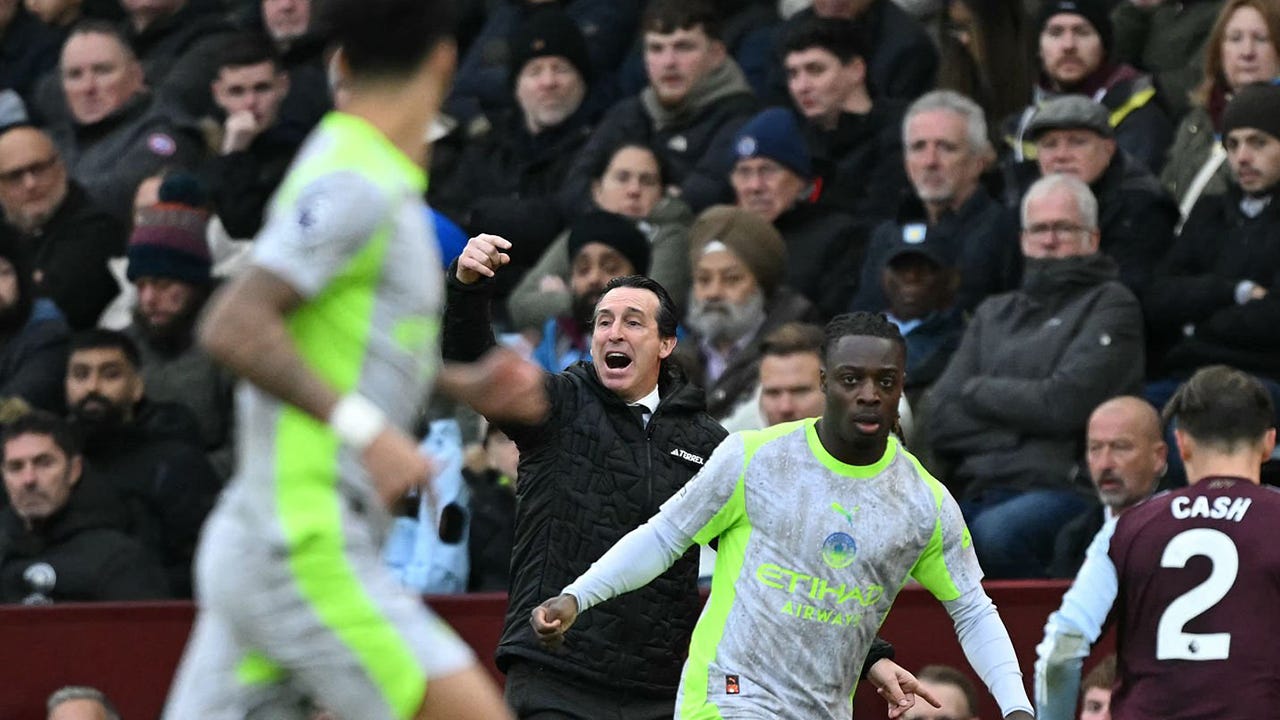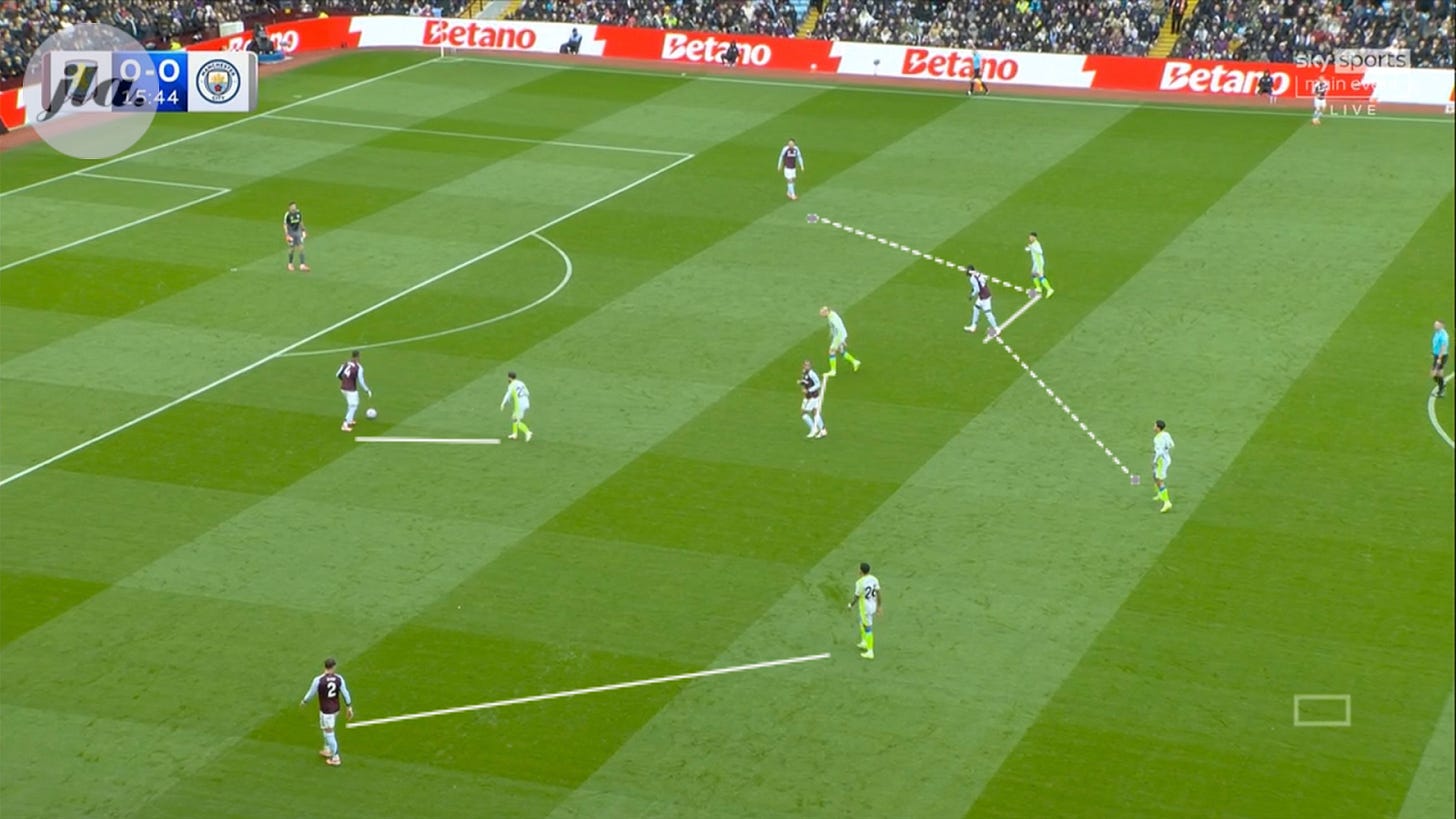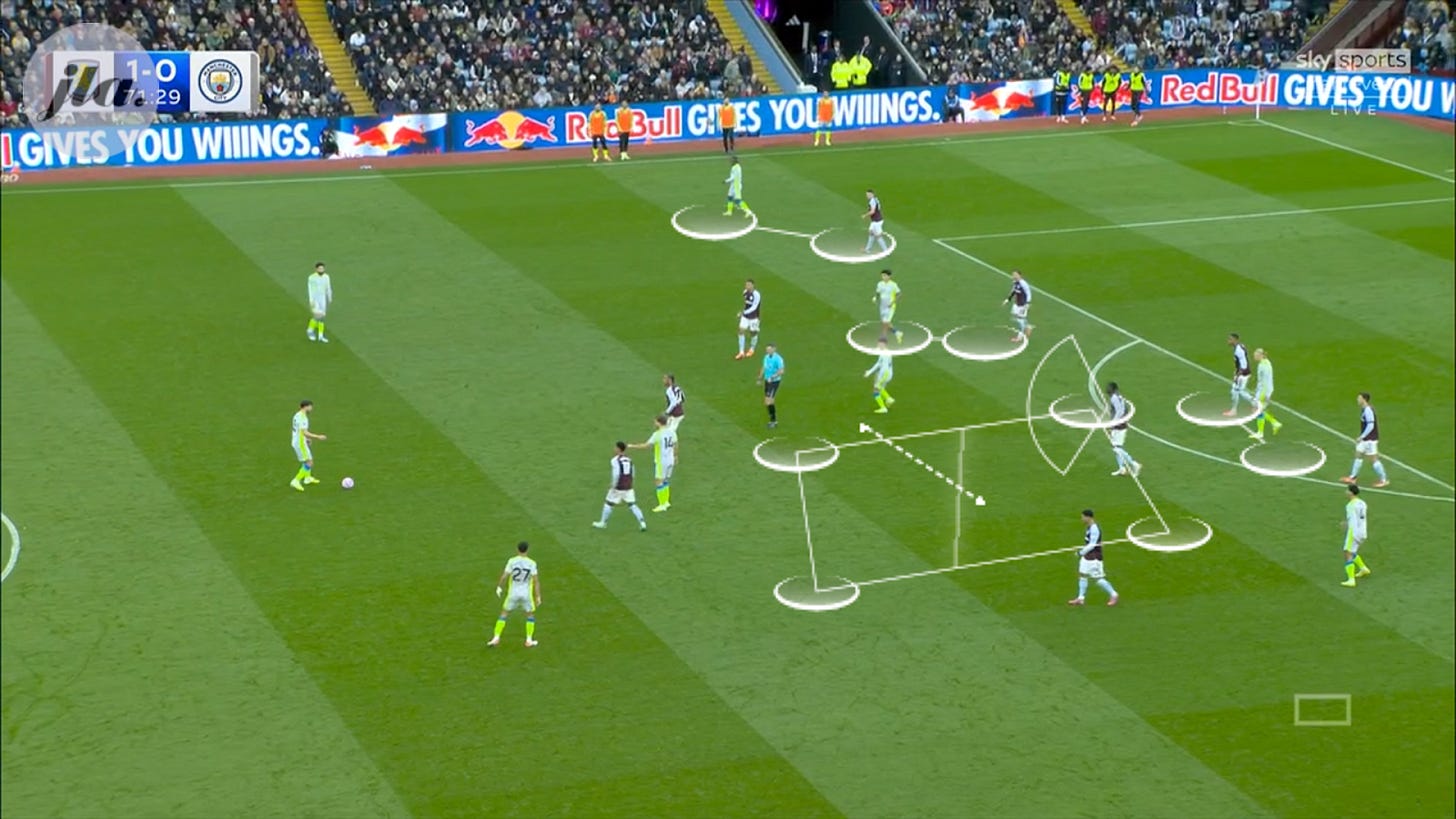How Emery Nullified And Beat Pep's City Again.
Villa's Fourth Consecutive PL Win Analysed.
The most intriguing game of the Sunday fixtures saw Aston Villa play host to Manchester City, a matchup that generated significant anticipation. Both teams entered the game in excellent form, with Villa having turned their season around following a somewhat rocky start. After a few challenging early matches, Unai Emery’s side had found their rhythm and were riding a three-game winning streak in the Premier League. On the other hand, Manchester City, despite facing occasional challenges, had been virtually unstoppable since their away defeat at Brighton in game week 3, remaining unbeaten in all competitions since. This clash brought together two sides in impressive form, setting the stage for an exciting and highly competitive encounter.
In the end it was Matty Cash’s strike in the 19th minute that won the game for Aston Villa. He found himself space on the edge of the box from a corner, beat Bernardo Silva and swept the ball into the bottom right corner on his weak foot - a superb finish.
How City Pressed Villa
City set out with an extremely aggressive press right from the first whistle, immediately asserting their intent to dominate territory and tempo. They adopted a man-oriented pressing structure, going virtually man to man against Aston Villa’s buildup phase. Bernardo Silva and Phil Foden were central to this approach, closely shadowing Amadou Onana and Boubacar Kamara throughout much of Villa’s early possession sequences. Rotations within City’s press were crucial, ensuring that numerical balance was maintained despite Villa’s attempts to play out from the back. As shown in this sequence, Villa initially had a spare man in Pau Torres, who found himself momentarily free to receive from Ezri Konsa. However, as soon as the pass was played, Torres became Phil Foden’s direct responsibility, triggering a coordinated chain reaction within City’s press. Tijjani Reijnders stepped up aggressively onto Onana, Bernardo Silva dropped onto Kamara to prevent an easy outlet, Erling Haaland curved his press to cut off the return pass to Konsa, and Oscar Bobb pushed higher to close down Lucas Digne on the flank. This synchronized movement effectively boxed Villa into their defensive third, showcasing the precision and intensity of City’s high press.
Emery’s Plan For The Press
Unai Emery was fully aware that his attacking players do not match up particularly well in terms of physical presence against Manchester City’s back four, all of whom stand well over six feet tall. This physical mismatch meant that he was forced to search for an alternative solution. Aston Villa therefore decided to bypass City’s aggressive press by exploiting the open spaces that were frequently left behind City’s midfield three. Watching this unfold immediately gave me flashbacks to how Oliver Glasner implemented a very similar approach during last season’s FA Cup final — comparable in concept, yet executed somewhat differently. City’s forward press, while extremely well organised and coordinated, still left a noticeable gap between the first pressing line and their defensive line of four, and at times that space became far too large. Villa’s defenders were clearly aware of this weakness and deliberately looked to bait City’s press before quickly dropping the ball in behind it. Their forwards would then swarm around the loose ball to contest the second phases, which often enabled them to launch swift counterattacks and escape pressure. In the example shown here, six of City’s players are positioned deep within Villa’s defensive third. Konsa then plays a long, direct ball straight through the centre of them, which not only eases the immediate pressure but also simultaneously allows Villa to spring forward on the break.
How Villa Managed The Game
Villa managed to fashion a significant number of chances throughout the entire game by repeatedly managing to beat City’s aggressive high press; however, despite doing so on numerous occasions, they never actually managed to score from any of those opportunities. Some of the most notable chances of the match fell to Jadon Sancho and John McGinn during the second half, yet even those attempts ultimately proved insufficient to double their slender lead. City, on the other hand, really began to push forward in the second half as they searched desperately for an equaliser, and their best opportunity of the half came through Phil Foden, who saw his effort heroically blocked. Over the course of the match, City generated a total of just 1.18 expected goals (xG), with 0.99 of that figure coming in the second half alone. However, that statistic should not mislead anyone into believing that they created enough clear chances to score - they did not. In fact, they attempted 16 shots during the second half, which meant their average xG per shot was only 0.062, reflecting how poor the quality of their opportunities truly was.
This lack of cutting edge from City was down to nothing less than a brilliant and extremely disciplined defensive display from Villa, who, for the final 20 minutes of the match, dropped deep and defended with all eleven players positioned behind the ball in a hybrid zonal and man-marking structure. The reason this setup was a hybrid zone/man system rather than the more traditional man-to-man structure that we have become accustomed to seeing from other teams was entirely due to the specific player matchups on the pitch. Unai Emery fully understood the tendencies and intentions of players such as Phil Foden, Jérémy Doku, and Rayan Cherki - each of whom constantly looked to exploit pockets of space - and he adjusted his defensive system accordingly.
Marking in this particular way enabled the centre-backs to effectively pick up an opposition player whenever that player moved into the half-space, while at the same time ensuring that they were not burdened with the responsibility of tracking them if they decided to drop deeper. In those situations, the defensive responsibility was smoothly passed on to another player occupying the appropriate zone. You can see this in the above example: Matty Cash is initially tasked with marking Nico O’Reilly. However, when O’Reilly drifts into a deeper area of the pitch, the responsibility of marking him is immediately transferred to Morgan Rogers, as O’Reilly has now entered Rogers’ defensive zone. Similarly, Phil Foden has just vacated Rogers’ zone and is on the verge of moving into Amadou Onana’s area of coverage. Because of the tight and compact nature of the spaces between Villa’s defensive and midfield lines, this kind of rotational marking becomes relatively straightforward for Aston Villa to execute. The players are able to pass on their marking assignments fluidly, ensuring there is minimal disruption to their overall defensive structure. This level of coordination allows Villa to rotate defensively without ever leaving a Manchester City player unmarked for long enough to cause any serious damage or create a dangerous opportunity.
The Art of Football Journalism | Henry Winter on Fergie, Bellingham & Modern Media
In our new special guest video, James chats to award-winning football writer Henry Winter about storytelling in different formats, how Fergie reacted to this negative Man United match report and most important commodity when working in football.









